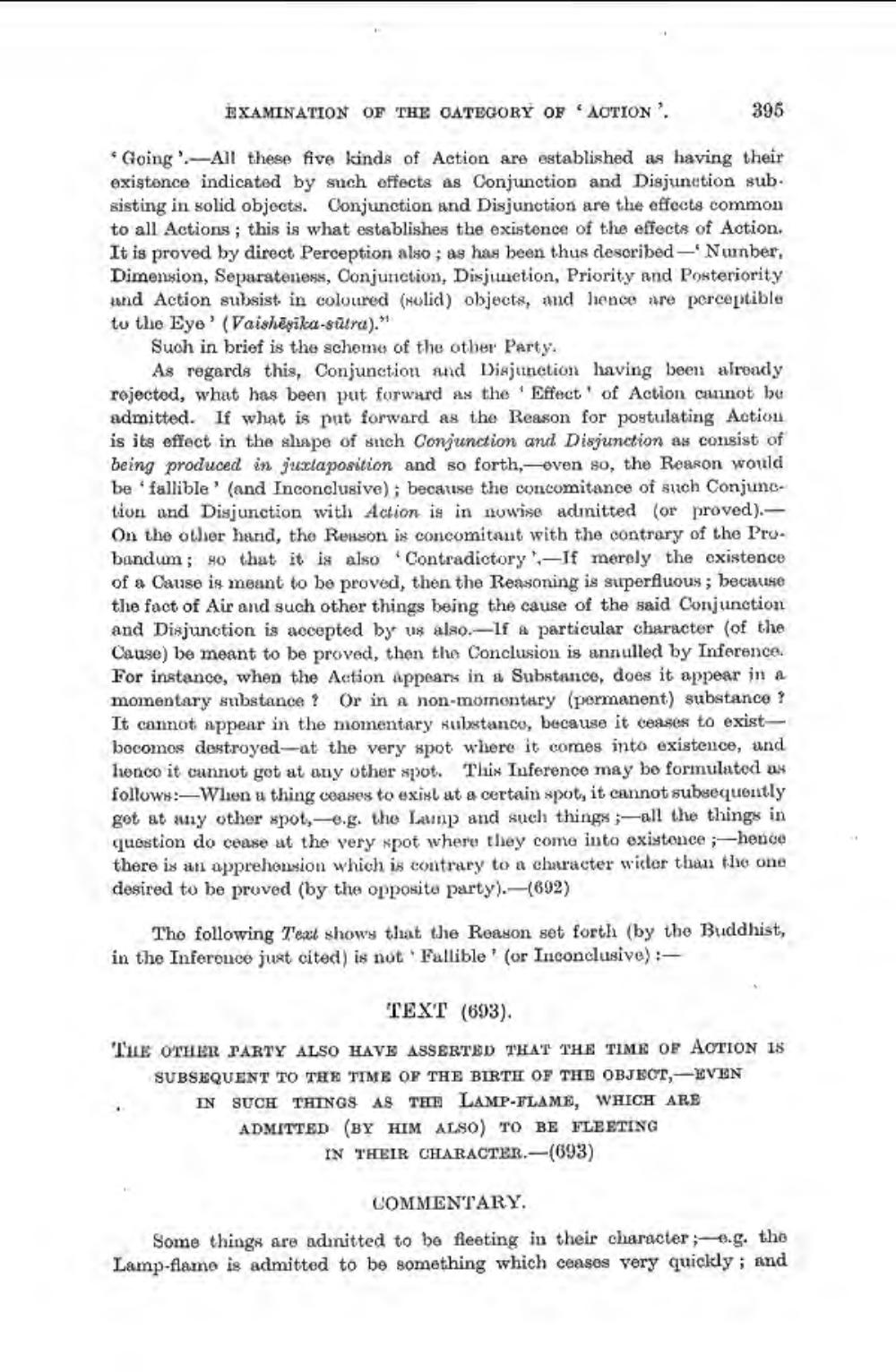________________
EXAMINATION OF THE CATEGORY OF ACTION.
395
* Going '-All these five kinds of Action are established as having their existence indicated by such effects as Conjunction and Disjunction sub. sisting in solid objects. Conjunction and Disjunction are the effects common to all Actions ; this is what establishes the existence of the effects of Action. It is proved by direct Perception also ; as has been thus described – Nurnber, Dimension, Separateness, Conjunction, Disjunetion, Priority and Posteriority and Action subsist in coloured (Holid) objects, and hence are perceptible tu the Eye' (Vaishēsika-sūtra)."
Such in brief is the scheme of the other Party.
As regards this, Conjunction and Disjunction having been already rejectod, what has been put forward as the 'Effect of Action cannot be admitted. If what is put forward as the Reason for postulating Actiou is its effect in the shape of such Conjunction and Disjunction as consist of being produced in jutaposition and so forth, even so, the Reason would be 'fallible' (and Inconclusive); because the concomitance of such Conjunction and Disjunction with Action is in nowise admitted (or proved).On the other hand, the Reason is concomitant with the contrary of the Probandum; so that it is also contradictory - If merely the existence of a Cause is meant to be proved, then the Reasoning is superfluous; because the fact of Air and such other things being the cause of the said Conjunction and Disjunction is accepted by us also.-1f a particular character (of the Cause) be meant to be proved, then the Conclusion is annulled by Inference. For instance, when the Action Appears in a Substance, does it appear in a momentary substance ? Or in a non-momentary (permanent) substance ? It cannot appear in the momentary substanco, because it ceases to existbocomos destroyed-at the very spot where it comes into existence, and henco it cannot got at any other spot. This Inference may be formulated 24 follows:When a thing ceases to exist at a certain spot, it cannot subsequently got at any other spoty-eg, the Lamp and such things ;-all the things in question do cease at the very spot where they come into existence ;-hence there is all apprehonsion which is contrary to a character wiclor than the one desired to be proved by the opposita party).-(692)
The following Teat shows that the Reason set forth by the Buddhist, in the Inferonce just cited) is not Fallible (or Inconclusive)
TEXT (693)
THE OTHER PARTY ALSO HAVE ASSERTED THAT THE TIME OF ACTION 15 SUBSEQUENT TO THE TIME OF THE BIRTH OF THE OBJECT,-EVEN IN SUCH THINGS AS THE LAMP-FLAME, WHICH ARE ADMITTED (BY HIM ALSO) TO BE FLEETING
IN THEIR CHARACTER.-(693)
COMMENTARY Some things are adınitted to be fleeting in their character ;-.g. tho Lamp-flame is admitted to be something which ceases very quickly; and




